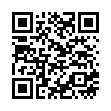That Insane, $81M Bangladesh Bank Heist? Here’s What We Know
That Insane, $81M Bangladesh Bank Heist? Here’s What We Know
WHEN REPORTS SURFACED in February of a spectacular bank hack that sucked $81
million from accounts
at Bangladesh Bank in just hours,
news headlines snickered over a typo that prevented the hackers from stealing the
full $1 billion they
were after.
Last week the snickering stopped with new reports that the hackers struck a
second bank, and possibly
others—though authorities won’t say if
those heists were equally successful.
Bank hacks have traditionally focused on
stealing the login
credentials of bank account holders—either
individuals or small businesses.
Billions have been stolen successfully in this way.
But the hacks in this
case targeted the banks themselves and
focused on subverting their SWIFT accounts, the international money transfer
system that banks use to
move billions of dollars daily between
themselves.
As details continue to trickle out about how the heists unfolded, here’s a look at
what we do and don’t
know so far.
What is SWIFT?
SWIFT stands for the Society for Worldwide Interbank Financial Telecommunication
and is a consortium
that operates a trusted and closed
computer network for communication between member banks around the world.
The consortium, which
dates back to the 1970s, is based in
Belgium and is overseen by the National Bank of Belgium and a committee
composed of representatives
from the US Federal Reserve, the
Bank of England, the European Central Bank, the Bank of Japan and other major
banks.
The SWIFT
platform has some 11,000 users and
processes about 25 million communications a day, most of them money transfer
transactions.
Financial
institutions and brokerage houses
that use SWIFT have codes that identify each institution as well as credentials that
authenticate and verify
transactions.
What Happened?


Related networks
